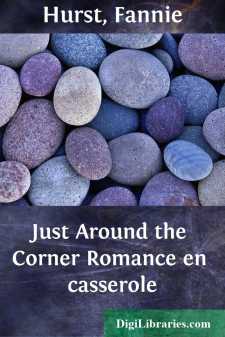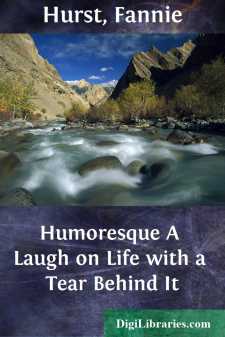Categories
- Antiques & Collectibles 13
- Architecture 36
- Art 48
- Bibles 22
- Biography & Autobiography 813
- Body, Mind & Spirit 142
- Business & Economics 28
- Children's Books 15
- Children's Fiction 12
- Computers 4
- Cooking 94
- Crafts & Hobbies 4
- Drama 346
- Education 46
- Family & Relationships 57
- Fiction 11828
- Games 19
- Gardening 17
- Health & Fitness 34
- History 1377
- House & Home 1
- Humor 147
- Juvenile Fiction 1873
- Juvenile Nonfiction 202
- Language Arts & Disciplines 88
- Law 16
- Literary Collections 686
- Literary Criticism 179
- Mathematics 13
- Medical 41
- Music 40
- Nature 179
- Non-Classifiable 1768
- Performing Arts 7
- Periodicals 1453
- Philosophy 64
- Photography 2
- Poetry 896
- Political Science 203
- Psychology 42
- Reference 154
- Religion 513
- Science 126
- Self-Help 84
- Social Science 81
- Sports & Recreation 34
- Study Aids 3
- Technology & Engineering 59
- Transportation 23
- Travel 463
- True Crime 29
Fannie Hurst
Fannie Hurst (1889–1968) was an American author known for her prolific output of short stories, novels, and plays, often focusing on themes of social justice, women's issues, and class disparities. Her most famous works include "Imitation of Life" (1933), which was adapted into two successful films, and "Back Street" (1931). Hurst was also an active social advocate, supporting causes such as racial equality and women's rights. Her vivid storytelling and exploration of emotional depth made her one of the most popular and influential writers of her time.
Author's Books:
Sort by:
by:
Fannie Hurst
IN the Knockerbeck Hotel there are various parlors; Pompeian rooms lined in marble and pillared in chaste fluted columns; Louis Quinze corners, gold-leafed and pink-brocaded, principally furnished with a spindly-legged Vernis-Martin cabinet and a large French clock in the form of a celestial sphere surmounted by a gold cupid. There are high-ceilinged rendezvous rooms, with six arm and two straight...
more...
by:
Fannie Hurst
I BITTER-SWEET Much of the tragical lore of the infant mortality, the malnutrition, and the five-in-a-room morality of the city's poor is written in statistics, and the statistical path to the heart is more figurative than literal. It is difficult to write stylistically a per-annum report of 1,327 curvatures of the spine, whereas the poor specific little vertebra of Mamie O'Grady, daughter to...
more...
by:
Fannie Hurst
HUMORESQUE On either side of the Bowery, which cuts through like a drain to catch its sewage, Every Man's Land, a reeking march of humanity and humidity, steams with the excrement of seventeen languages, flung in patois from tenement windows, fire escapes, curbs, stoops, and cellars whose walls are terrible and spongy with fungi. By that impregnable chemistry of race whereby the red blood of the...
more...
by:
Fannie Hurst
SHE WALKS IN BEAUTY By that same architectural gesture of grief which caused Jehan at Agra to erect the Taj Mahal in memory of a dead wife and a cold hearthstone, so the Bon Ton hotel, even to the pillars with red-freckled monoliths and peacock-backed lobby chairs, making the analogy rather absurdly complete, reared its fourteen stories of "elegantly furnished suites, all the comforts and none of...
more...
by:
Fannie Hurst
CHAPTER I When Lilly Becker eked out with one hand that most indomitable of pianoforte selections, Rubinstein's "Melody in F," her young mind had a habit of transcending itself into some such illusory realm as this: Springtime seen lacily through a phantasmagoria of song. A very floral sward. Fountains that tossed up coloratura bubbles of sheerest aria and a sort of Greek frieze of youth...
more...






